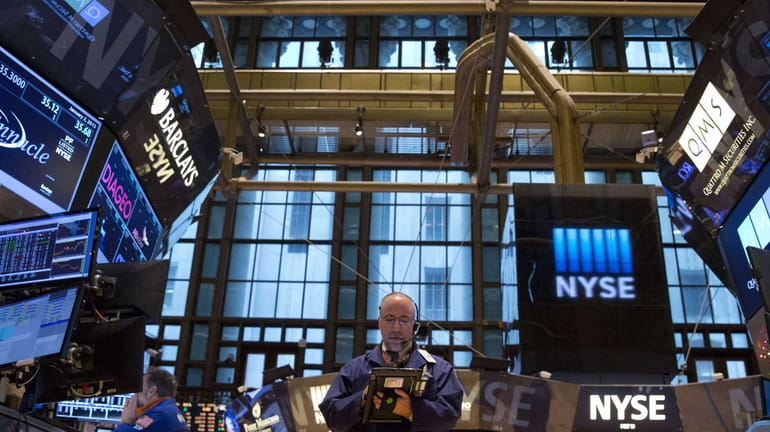GDP gives hope to Democrats but not many others

A trader works on the floor of the New York Stock Exchange in Manhattan. The S&P 500 Index has reacted to the spate of mixed data by fluctuating between gains and losses. Credit: Bloomberg/Jin Lee
The rebound in U.S. gross domestic product in the third quarter comes as a welcome surprise for Democrats heading into midterm elections, potentially putting to rest the notion that the country is already in a recession. But for workers and investors, the report isn’t quite so reassuring.
Consider the impact on public perception. GDP, arguably the most publicized economic statistic in America, had contracted in the previous two quarters, bolstering the argument that the U.S. was already in a downturn, based of course on a flimsy rule-of-thumb definition of recession as two consecutive quarters of declining real growth. This year has been a master class in why rules of thumb are so perilous because the weak first-half numbers were driven by volatile inventory and trade components and could yet be revised to look much more benign.
For all practical purposes, the U.S. almost certainly skirted recession in the first half of the year. The most palpable aspects of any recession are job losses and declining income, and unemployment has hovered near a five-decade low in the period while consumers, the U.S.’s economic engine, have spent their money at a mostly steady pace. The U.S.’s official arbiter of recessions, the National Bureau of Economic Research’s Business Cycle Dating Committee, defines recession as a “significant decline in economic activity that is spread across the economy and that lasts more than a few months.” As the committee makes clear, it will make its final call based on considerations of depth, duration and diffusion, and the apparent first-half contraction can’t possibly be considered diffuse.
It’s complicated, of course, and Republicans have done an effective job thus far of using the confusion to their advantage, with the odds growing that the party could seize control of both the House and Senate. Less than two weeks before midterms, Democrats have to be pleased that they have strong ammunition to counter the deceiving recession talking point. Of course, slick political discourse is a two-way street, and Democrats aren’t likely to fess up to the bad news about the future, either.
For markets, the latest numbers will give traders little solace. Final sales to domestic purchasers, a gauge that looks past the volatile inventory and trade components, rose just 0.5% in the third quarter. Residential investment is contracting, and formerly hardy consumer spending is starting to lose steam. In a sense, that’s the intended consequence of aggressive interest-rate increases meant to slow the worst inflation in 40 years; they take significant time to filter into the economy. With the Federal Reserve committed to stopping inflation, the most punishing consequences may well be several quarters in the future.
Meanwhile, another piece of data released Thursday morning — capital goods new orders, nondefense excluding aircraft and parts — fell a seasonally adjusted 0.7% in September, its second-biggest contraction since April 2020. The measure, although far more obscure than GDP, has proved helpful in assessing the direction of corporate earnings, and if the latest data is any guide, the U.S. could be on the cusp of a turning point. Third-quarter earnings reports have painted a picture of a corporate America that isn’t quite falling apart yet but is bracing for a tough year ahead. Tellingly, the S&P 500 Index has reacted to the spate of mixed data by fluctuating between gains and losses.
All told, the bounce in GDP should put to rest a false and politically motivated narrative about the state of the economy, but it will do little to settle the debate about where it’s going. It won’t dissuade the Fed from forging ahead in its bid to raise interest rates to bring down inflation, and it leaves little settled as to whether the country is heading for a real recession — the kind that has tangible consequences on Americans’ livelihoods.
Jonathan Levin has worked as a Bloomberg journalist in Latin America and the U.S., covering finance, markets and M&A. Most recently, he has served as the company's Miami bureau chief. He is a CFA charterholder. This column does not necessarily reflect the opinion of the editorial board or Bloomberg LP and its owners.
